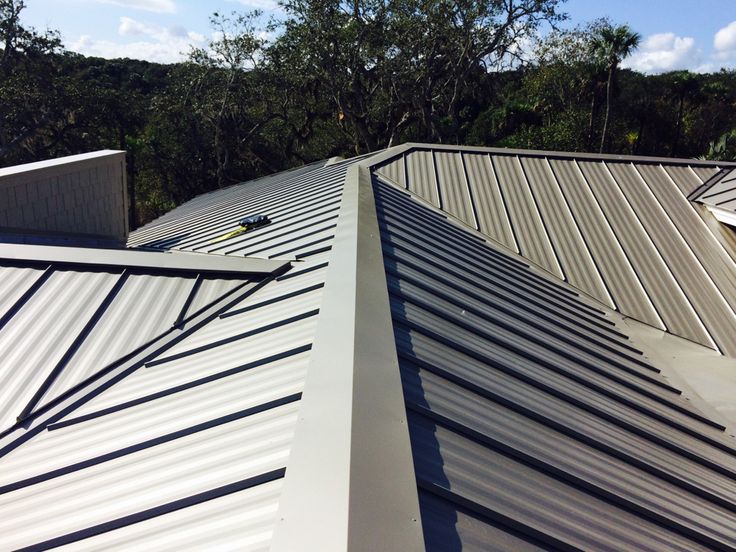
Why would you want to upgrade to metal roofing?
Whether you’re thinking of upgrading your home roofing system, or need to replace your existing worn-out roof, chances are good that you’ve considered a new metal roof. In fact, that’s likely why you’re reading this page! Cook Roofing Company has experience installing, repairing, and replacing metal roofs. We have been called out many times to fix leaking metal roofs. It’s amazing how many have been installed wrong. If you want yours installed right, contact us now or give us a call. We’d be happy to meet with you personally and take care of your metal roofing questions, concerns, repairs, or installation. Our number is 417-334-4238, and there’s no obligation with a free estimate.
Metal roofs offer many advantages over more conventional roofing materials. Some of these advantages include a longer lifespan than conventional roofing materials like asphalt shingles and cedar shake, better fire resistance, unparalleled longevity and better durability against harsh weather like hail, heavy rain and snow, and high winds. Add to these the fact that a good quality metal roof can easily add aesthetic value, and often even actual property value, to your home or building, and it’s easy to see why metal roofs are growing in popularity.
We’ve recently added some new articles about metal roofing updated for 2024. Feel free to have a look at these:
Durability and Weather Resistance
Highlight the advanced technologies and materials that make metal roofs more robust, such as innovations in coatings and finishes that offer enhanced protection against corrosion, fading, and chipping. New techniques for reinforcement and improved structural integrity ensure metal roofs can withstand severe weather conditions for decades.
Energy Efficiency and Sustainability
Emphasize the innovations in insulation and ventilation techniques that optimize energy performance. Integration of renewable energy technologies, like solar panels, into metal roofing systems, reduces energy consumption and allows homeowners and businesses to generate clean, renewable energy.
Design and Aesthetics
Metal roofing has embraced modern architectural trends, offering surface textures, patterns, and an extensive range of color choices for unprecedented customization options. This allows metal roofing to complement any architectural design, adding elegance and refinement to properties.
Smart and Connected Roofing Solutions
Discuss the integration of smart technologies into metal roofing systems, such as sensors and monitoring systems that detect potential issues and provide real-time data on the roof’s performance. This can be a game-changer in how homes manage their roofing systems.
Installation and Maintenance Innovations
Mention advancements in installation techniques that make metal roofing projects more efficient and cost-effective, as well as innovative maintenance solutions like self-cleaning coatings and self-repairing coatings that address minor damages automatically, saving time and effort.
Before we talk about different metal roofing types and profiles, let’s discuss the benefits of installing metal roofs on your residential or commercial buildings.
Advantages of Metal Roofing
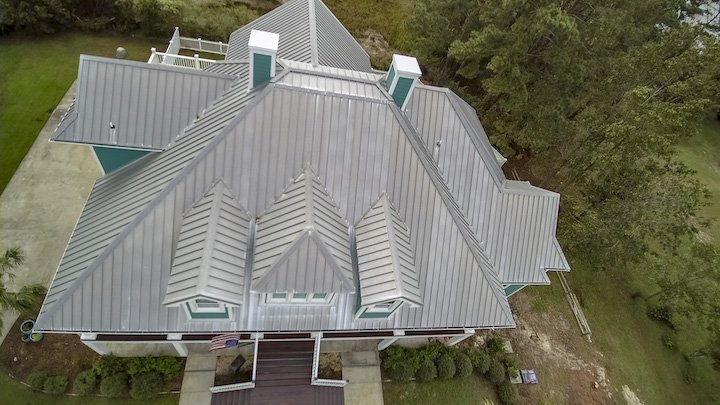
Longevity
One of the top reasons people choose metal roofing is for longevity. The useful lifecycle of metal roofing materials is much longer than asphalt. A metal roof will last 50-75 years when properly installed, and require very little maintenance. Using Kynar or Hylar finishes helps protect against chalking and color fading over the metal roof’s lifetime. Even though the initial cost of a standing seam metal roof is generally more than the cost of an asphalt shingle roof, metal roofs are usually a “once-in-a-lifetime” purchase. Compare this to the 12-20 years life expectancy of a typical asphalt roof.
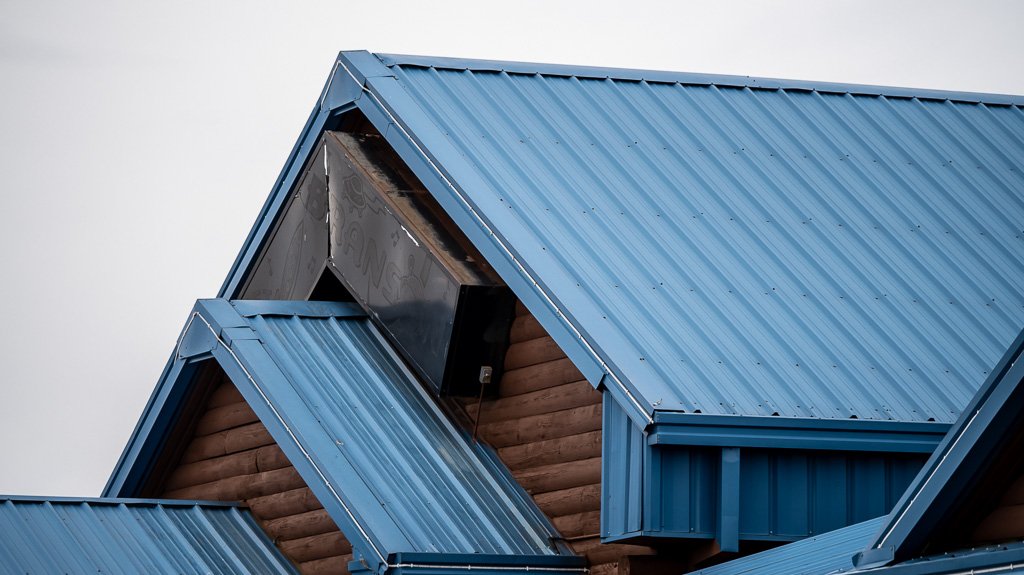
Durability
When properly installed, metal roofs can withstand wind gusts up to 140 mph. Most metal roofs will not corrode when the right type is chosen for the area’s climate. Coatings and treatments are available to provide even more protection. Depending on the thickness of the metal you choose, metal roofing can withstand hail of up to 2″ in diameter, as well as other impacts such as blown debris. The thickness is referred to as “gauge,” with the smaller numbers indicating thicker and stronger material. For example, 29 gauge is thinner than 26 gauge, of the two most common thicknesses available. 26 gauge is much more resistant to denting from hail than 29 gauge. Some corrugated metal roof panels, for example, are available up to 22 gauge.
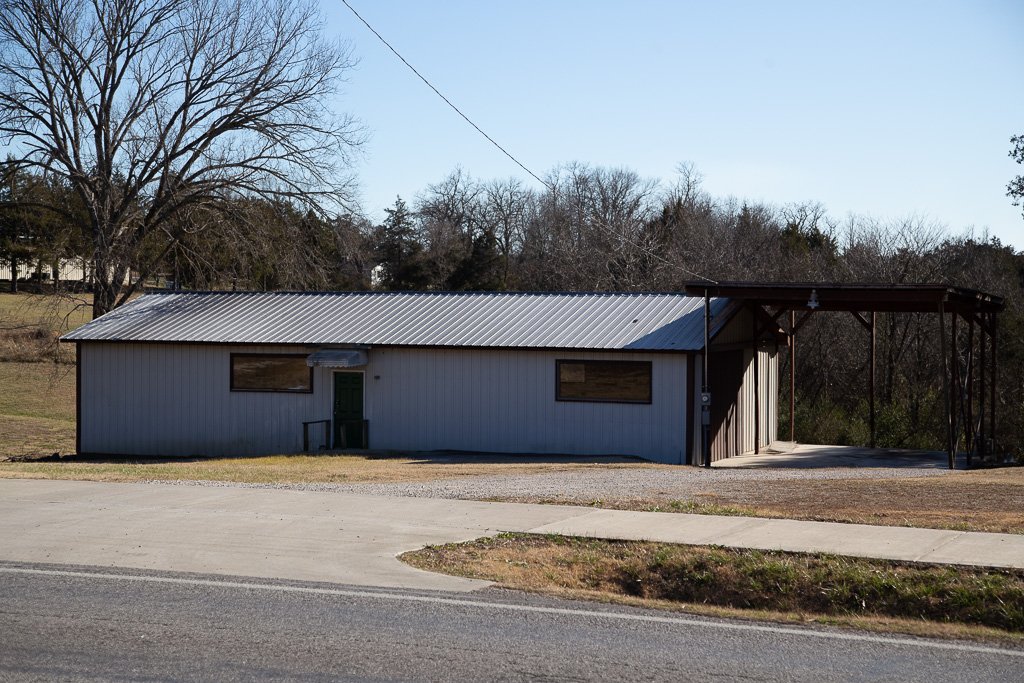
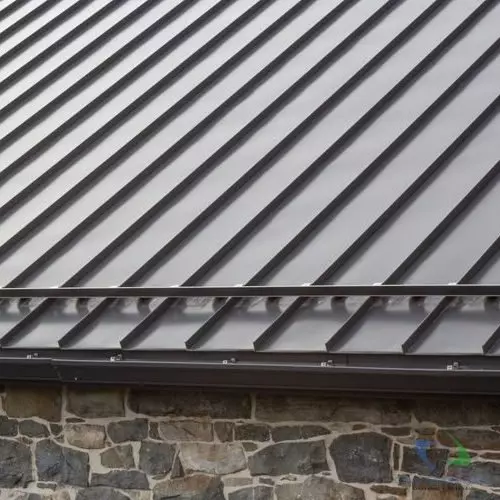
Interlocking metal roofs are also more impervious to leaks, if they are installed by a reputable roofing company who knows how to do this work correctly. Don’t take that for granted though, we’ve seen examples where almost every detail on the roof was wrong. And that roof was installed by a big box home improvement store (though we won’t name which one). We’ll include some pictures later for examples of how even presumably reputable roofers can get it wrong.
Metal roofs shed snow too. Snow tends to melt off a metal roof easily, and if you don’t use snow bars, it will slide off. Snow bars, if you don’t know, keep unsuspecting pedestrians from being buried in an avalanche from your roof!
Metal Roofs are Eco-Friendly
As we move towards a more sustainable environment, it’s important to be mindful of environmental impact. One way metal roofs stand out from most other types of roofs is that they are more eco-friendly.
Metal roofs are made from 25-95% recycled material, depending on the materials used. They are also 100% recyclable at the end of their life as a roof. By contrast, most shingle tear-off waste ends up as part of the building-related waste stream. In terms of production, there are fewer emissions released when making metal roofing.
Metal Roofs Provide Better Energy Efficiency
Finally, metal roofing reflects more light from the sun, which means a new metal roof will help keep your home cooler in the summer. Metal roofs are more or less reflective, depending on the type of finish used or applied. This reflectiveness alone can reduce cooling costs by as much as 10-25%. They also can provide better protection for insulated underlayments, making metal roofs a popular choice in passive home building. This is great for the summers in our area, as it can mean big savings on energy bills since you won’t have to crank up your AC.
Fire Safety
Metal roofs provide better fire resistance, and will meet the Class A fire rating standard when the proper underlayment is used. If the neighborhood kids hit your roof with bottle rockets, you don’t have to worry like you might with wood shake or asphalt shingles.
Aesthetically Appealing
For some people, the look of a nice standing seam metal roof is well-worth the additional cost. The most common metal profiles are aluminum, steel, zinc, copper, and tin, with steel being the most durable and most popular. The style options are endless, and you can even have their shape and texture mimic the look of other materials such as wood.
In terms of metal roofing colors, you can have your roof painted or coated with any color you can imagine. And although it is the most expensive metal roofing, many homeowners install copper roofs because of their natural beauty.
Low Maintenance
Not only does a metal roof last for many decades, but the upkeep needed is also minimal. Clearing debris, keeping the gutters clean, replacing old gaskets, repainting, and resealing every 20 years, are the only major things you will need to worry about when you install a metal roof.
Unless your area has extremely poor weather that lasts for months, you should not have to worry about corrosion or rust since metal roofs are designed to be impervious to water and dry out at a faster rate than wood. However, make sure not to allow debris to pile up on your roof or in your gutters as they can cause moisture to pile up, which can cause rust or corrosion over time.
Disadvantages of Metal Roofing
While there are some pretty big advantages in favor of metal roofing, there are a few drawbacks.
How Much Does a Metal Roof Cost?
Standing Seam Roofs are often as much as two or three times more expensive than an architectural shingle roof. While the life of a metal roof is much longer, investing in a metal roof only makes sense if you plan to stay in your home long enough to enjoy the cost benefits. However, you should recoup about 85-95% of the cost of a new metal roof when you sell your home (reference).
Noise
Light gauge metal roofs can be noisy, especially during a heavy rain or hailstorm. Adding more insulation during a roof installation will usually solve this problem. And some people, reportedly, even find the sound of rain on a metal roof comforting.
Expansion and Contraction
Metal roofing materials attached as large panels tend to expand and contract. If they are not properly installed with approved fasteners and clips that allow the metal to move, the metal may become permanently warped. This is sometimes called “oil canning,” and on some roofs can be pretty obvious. This is another factor to consider when choosing a metal roof installer, and a reason to find a quality roofer, rather than just looking at price alone. The standing seam metal roof panels in the photo below are pan style panels, which are flat from seam to seam. Choosing a style of metal panel that has ridges in it can also help prevent oil canning.
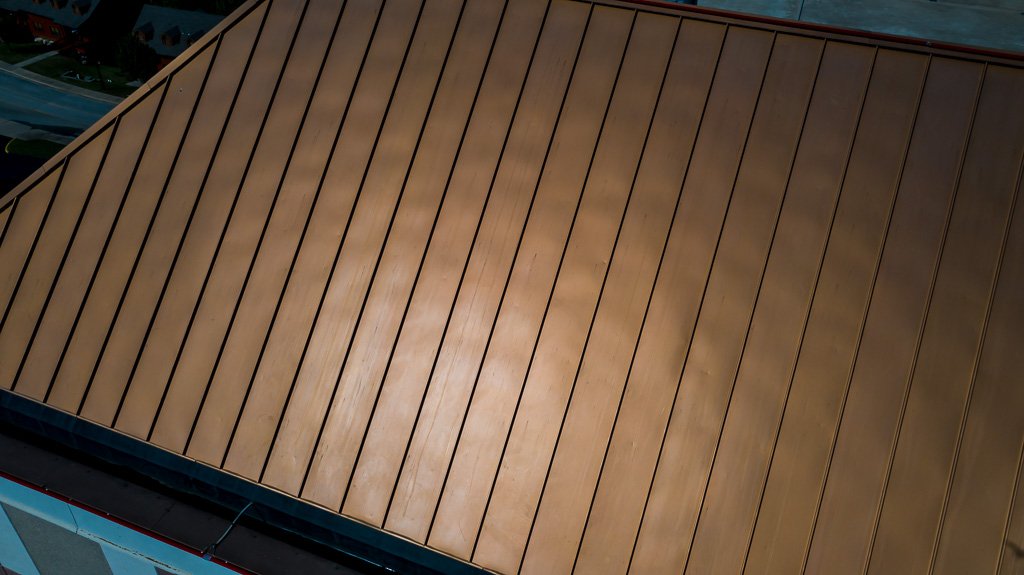
Inconsistency of Color Matching
Finding an exact match to the existing metal if a repair is required may be difficult. The same is true if a home addition is added years later.
Performance
Water can become trapped anywhere on the roof because of poor-quality installation or repair. This can eventually cause serious damage to the underlying structure. Low-grade metals may also be thinner and less durable and more prone to buckling and denting. Metal roof panels with low grade coatings will rust in certain climates. Thin metal will dent more easily during hail storms and installation.
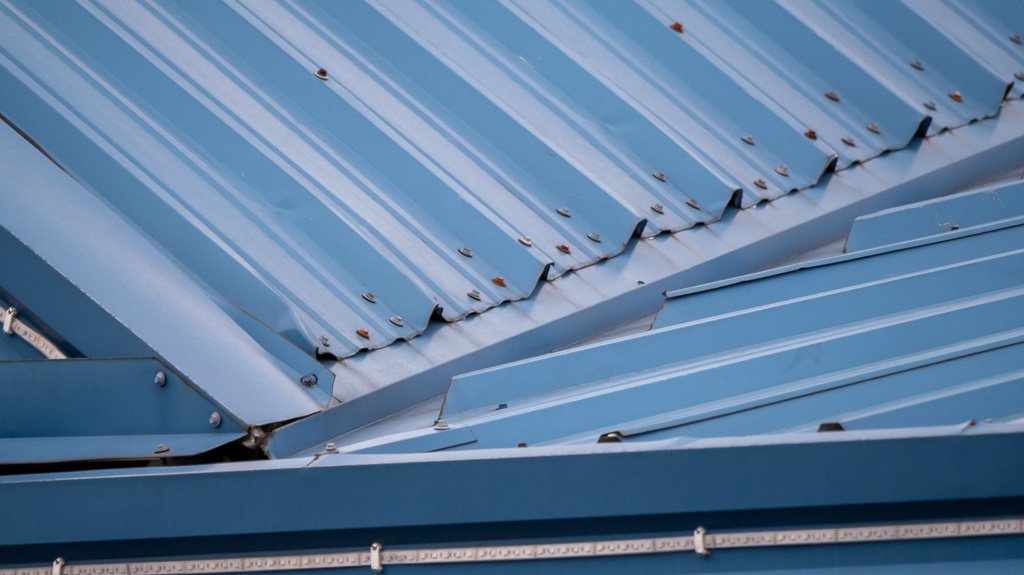
Insurance Coverage
Absolutely, the most important thing to know about a metal roof is the answer to a common question.
"Will my homeowners or property insurance cover my roof from damage?"
Surprisingly, the usual answer to this question is usually NO – if you haven’t made a point of talking about this coverage specifically with your agent, you might find it was excluded by default.
Storm damage is less common to metal roofs. Because they are so durable, they are unlikely to be damaged functionally by storms and other perils. There are no missing shingles, and rarely bent flashings, etc. The most common damage to metal roofs is from denting, scratching, and marring. Most insurance carriers today put exclusions in their homeowners policies that will not cover cosmetic damage. This includes denting, marring or scratching of metals and soft metals on your property. If you are investing in a metal roof, it is crucially important to understand this. That way, you can find an insurance provider who will sell you a policy without this exclusion.
Types of Metal Roofing Materials
For most people, when the phrase “metal roof” is mentioned, what comes to mind is a steel roof. However, metal roofing is an umbrella phrase for a variety of materials. Depending on your location, the first thing you should consider is the type of metallic roofing materials that suit weather conditions in your area. Every material has its pros and cons, and we will be talking about that in our descriptions.
Let’s get started…
1. Steel Roofing
Being an alloy made from iron and other elements, steel is used in virtually all aspects of building. Although it has been one of the most common materials used in commercial constructions, steel roofing is slowly getting incorporated into residential buildings.
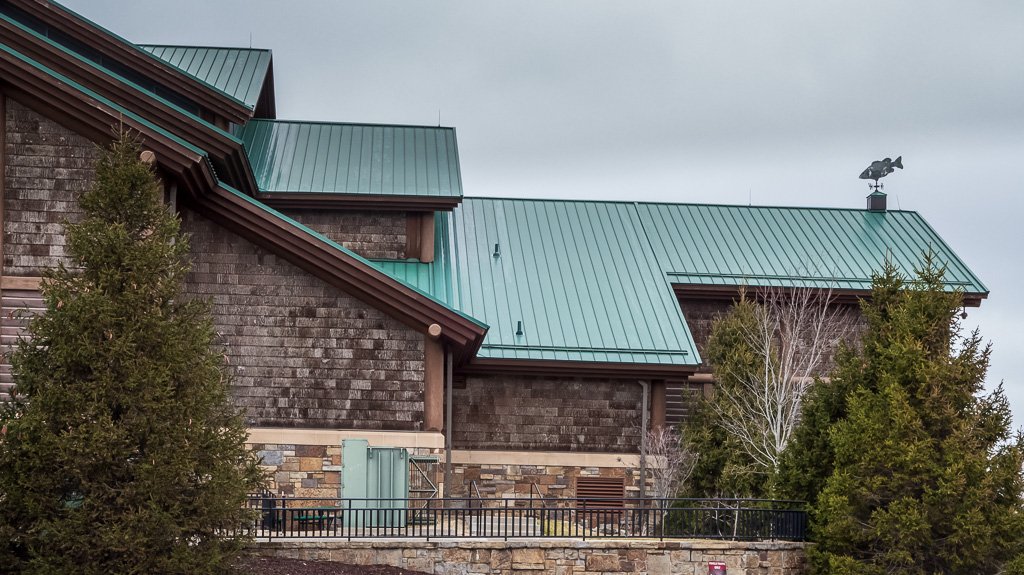
During the initial creation process, steel requires a lot of energy as compared to most other metals used in roofing today, such as zinc. However, its recyclability and availability mean that most of the steel used today is made from recycled materials rather than new creations. In fact, it is currently the most recycled material, making it an eco-friendly material to work with.
Another major advantage of steel roofing is that it is the most affordable when compared to other roofing metals. This explains why it is the most popular metal roofing material.
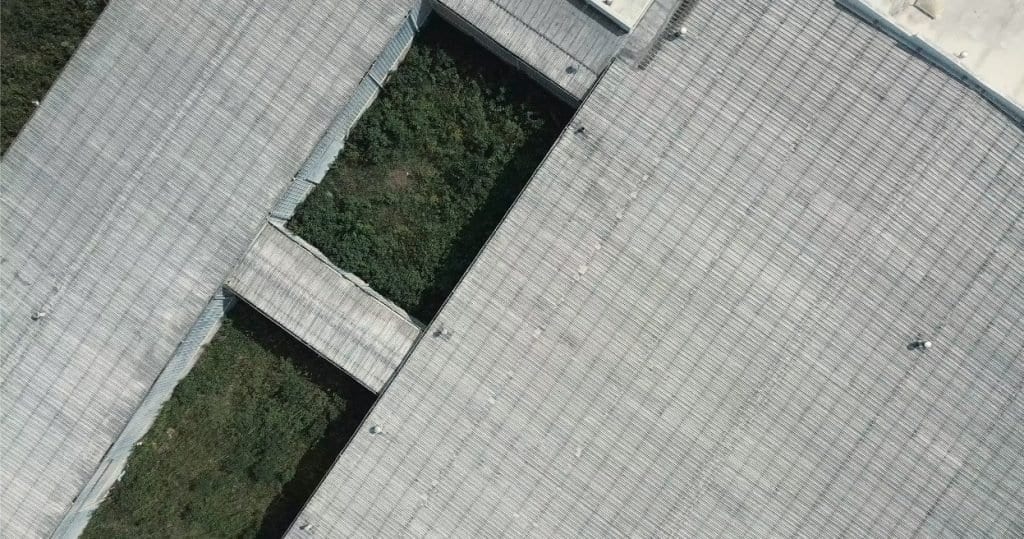
There are three major types of steel roofing:
- Galvanized Steel. This is the most common type of steel roofing material and is created using a layer of zinc to protect the inner layers of steel from corrosion. The zinc coating helps to extend the lifespan of the steel panel by slowing down the corrosion process.
- Galvalume Steel. This is similar to galvanized steel, but instead of using zinc coating, Galvalume uses a combination of zinc and aluminum. The combination coating makes it a superior option to galvanized steel, as the aluminum coating provides a smoother surface that creates a more uniform appearance and better surface protection. On the downside, it is vulnerable at cut edges and scratches.
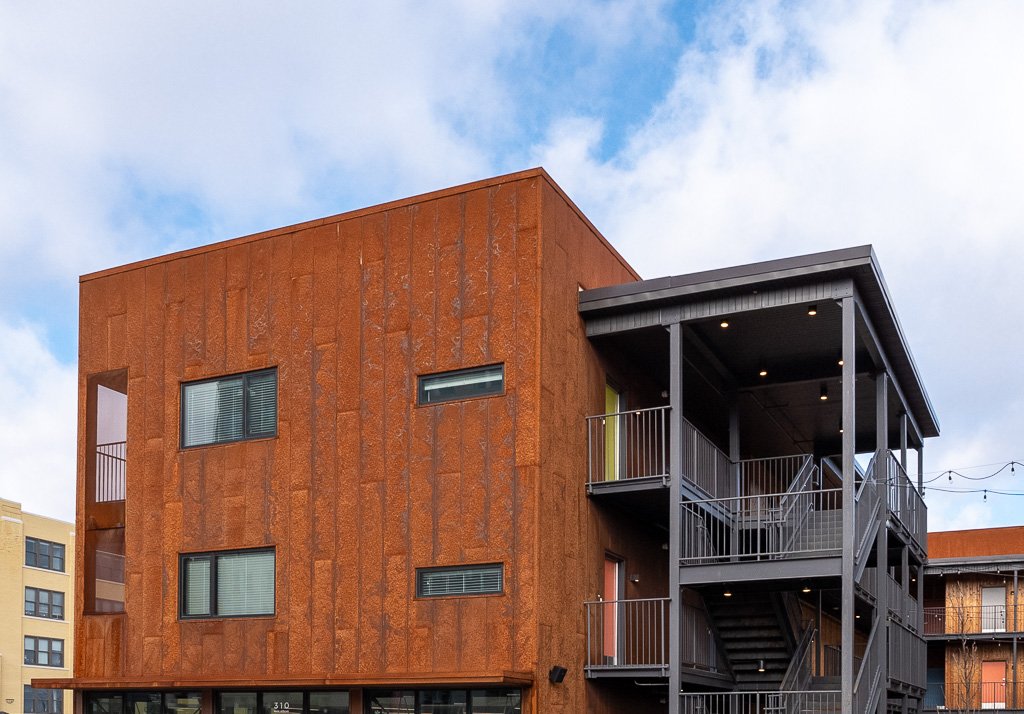
- Weathering Steel. Although originally designed to be used in heavy steel industries such as bridge construction, weathering steel is also used as a roofing material. This steel roofing material is designed to have the outer layer intentionally rust so as to protect the inner layer of steel. It is important to mention that weathering steel does rust intentionally, and thus it is not designed to be used primarily as a steel roofing material in residential buildings. It is often used in accent roofs.
There has been a huge development in steel roofing in the last half a century, with recent steel roofing options having the ability to mimic zinc, copper, and other pricey metal roofing options. This is made possible through paint systems that make it look like the natural patina of zinc, weathered steel, or copper. These solutions offer ideal solutions for remodeling roofing systems and often come with a lengthy warranty.
The main advantages steel roofing material offer over other metal roofing materials is its affordability and flexibility of use. This explains why it is the most preferred metallic roofing material for both residential and commercial projects, and the trend looks to continue.
As a green material, steel is highly recyclable and easily accessible. You can use it in areas with harsh weather conditions as well as areas that experience heavy hailstones and high winds since it is among the hardest roofing metal options. It is also ideal for mountainous areas with high snow volumes.
Overall, we can say that steel is a highly flexible roofing option for both residential and commercial roofing needs thanks to its diverse range of uses, durability, cost, and availability.
2. Aluminum Roofing
Durable, corrosion-resistant, and lightweight, aluminum is among the best roofing materials for virtually any residential metal roofing system, including tile, shingle, standing seam, slate, and shake profiles. It never rusts, which makes it ideal for coastal regions and areas where steel roof is not applicable.
Aluminum’s resistance to rust gives it a relatively longer lifespan as compared to most roofing metals. Among the first uses of aluminum was in capping the Washington Monument in 1885. Around that period, the processes involved in separating aluminum from bauxite began to advance, which led to the manufacture of building-grade aluminum alloys. Before that, aluminum was considered a precious metal.
Nowadays, you can find aluminum in virtually any profile in which metal roofing is made. In fact, it’s high malleability, and the additional structural strength it provides makes it a good alloy metal in most heavily formed roofing materials. Aluminum is also highly recyclable, which means that most of the aluminum roofing materials we are currently using are made from recycled waste.
These roofs are often recommended for installation in buildings that are in coastal regions, thanks to aluminum’s resistance to corrosion accelerated by salty conditions. However, despite the perception that aluminum is corrosion resistant, the reality is that it is an active metal and reacts fast to atmospheric conditions. It is this rapid reaction that protects it.
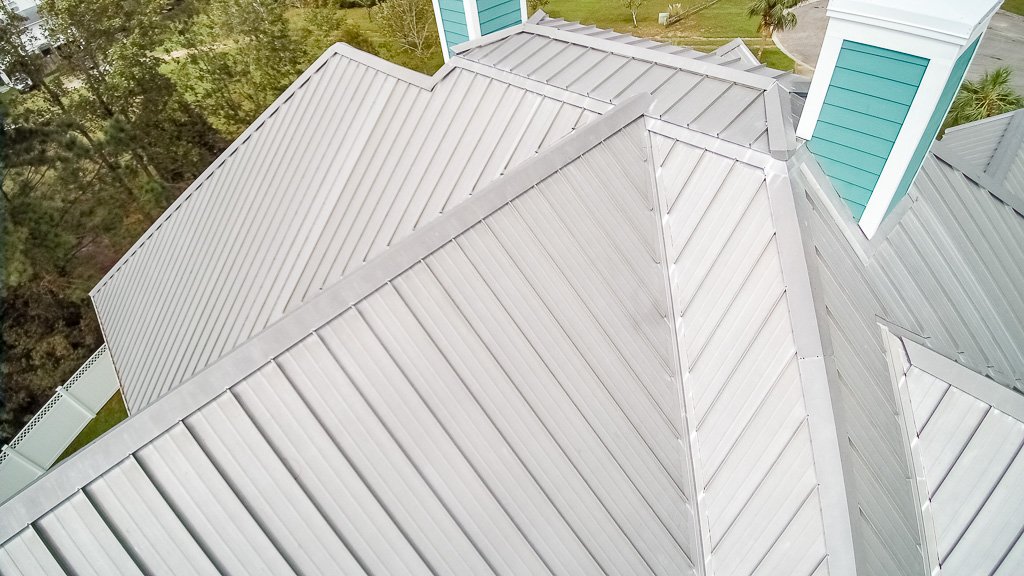
The outer layer of aluminum material reacts with oxygen, thereby forming a layer of aluminum oxide, which effectively protects the inner layers from further corrosion. This process is quite similar to that of weathering steel, but in a faster period and with longer protection time.
Due to its natural patina that forms over time being thought of as not aesthetically appealing, an aluminum roof is normally coated with paint.
This means that the cost of maintaining aluminum roofing is higher as compared to other solutions. In terms of cost, aluminum roofing cost lies in between the price of steel and copper.
While aluminum is great for use in coastal regions, it is not ideal in regions that experience high winds, hailstones, and harsh environmental conditions because it is thin. This means that it can experience damage within a short time. However, this can be rectified by choosing the right roofing design that minimizes damages.
3. Copper Roofing
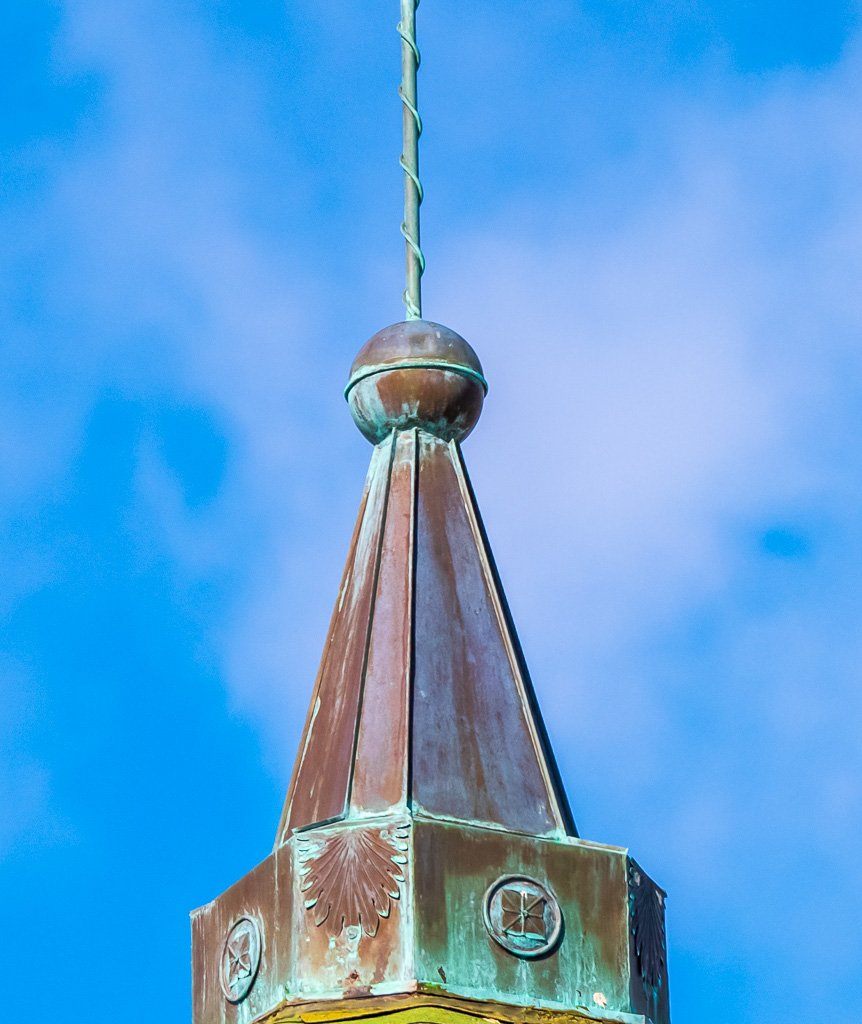
Copper roofing is regarded as one of the most aesthetically-appealing metallic roofing options. Unfortunately, you will have to dig deeper into your pocket to have this roofing material installed. Copper is the most expensive among the three most popular roofing materials- copper, aluminum, steel.
Rarely installed on an entire residential roof, copper is mainly used to accentuate areas where a touch of elegance is needed, such as over dormers or bay windows.
Copper roofing is mostly installed on historic buildings, cupolas, church steeples, etc. to make them outstanding.
Other times, copper roofing is used in conjunction with other roofing materials to act like a flashing material. However, it should not be used alongside steel or aluminum roofing as it speeds up the rate at which other metals deteriorate through galvanic action.
Also, with time copper can stain other metals, concrete, and brick due to water runoff that wash its patina residue. Therefore, it is important that you install a copper roof with this in mind to ensure that water coming off a copper roof is channeled off the building.
If you don’t want all these hassles, you can use lead-coated copper as an alternative to pure copper. However, keep in mind that this will cause the risks of lead-related effects.
A copper roof is preferred by many because of the attractive blue-green patina that forms when it is exposed for 8-15 years. How long a copper roof takes to complete the process of producing a green film on its surface depends on air components in a region. For example, salty conditions in coastal regions will increase the process.
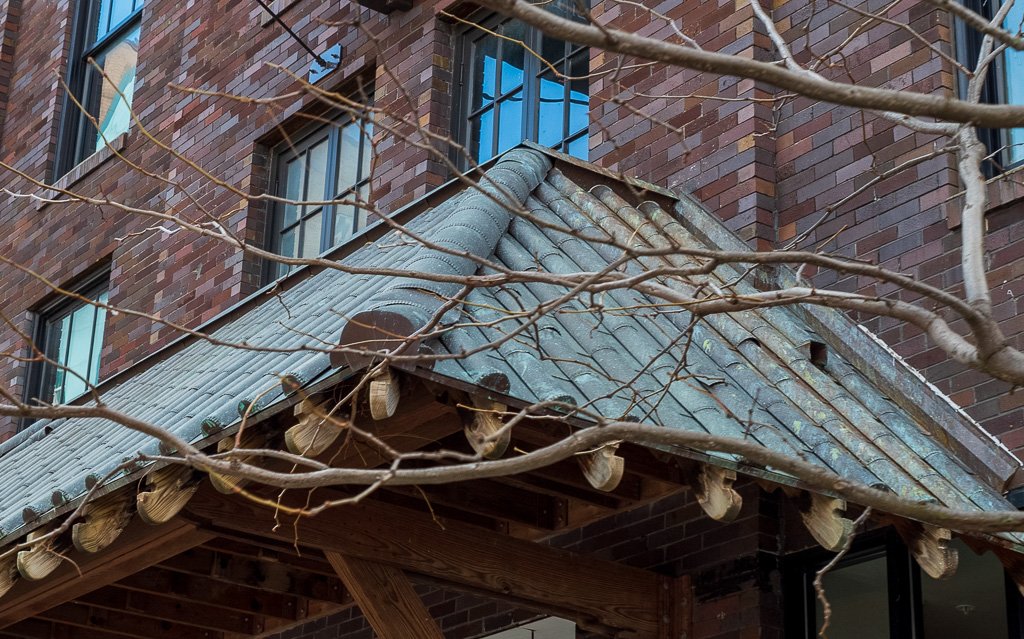
The patina formed acts as a barrier against corrosion, and this is one of the reasons copper roof is extremely durable. While copper can be treated to slow down or increase the speed of building the blue-green film, most homeowners prefer to buy the pure form of copper and allow it to weather naturally. Copper roofs are extremely durable and can sometimes last up to 100 years.
Due to its association with ‘wealthy and classy people,’ there has been an emergence of coating technology that makes aluminum or steel roofing to resemble copper. Finishes are available from those that look like new copper to those resembling fully weathered copper. Therefore, you can have an option to have your steel or aluminum roof resemble copper at a lower cost.
4. Zinc Roofing
Zinc is another great metal roofing material that is particularly used for commercial buildings and roof renovations.
A zinc roof is extremely corrosion-resistant and offers more advantages over other metal roofs, such as having self-healing abilities. A scratched zinc roof can recover given time, which makes them have a low maintenance cost. Even in a harsh environment, you will not have to worry about the damages inflicted on it as it tends to heal with time.
Zinc roof also looks more aesthetically appealing than most metal roofs. In addition to this, roofers can create interesting shapes and curves to make your roof look unique while still retaining its durable qualities. This makes it an ideal roofing material to form flashing around dormer windows and chimneys, as well as on the main body of the roof.
In terms of being eco-friendly, zinc roof takes less energy to produce as compared to most other metal roofing systems because it has a lower melting point. On top of this, zinc is recyclable, which means there will be no waste once the roof outlives its usefulness. Nevertheless, its longevity is the real advantage when it comes to being eco-friendly. This is because it can sometimes live for over a century if fitted in a normal environment
On the downside, zinc suffers from the chalking effect, which makes it less aesthetically appealing over time. Also, it is not cheap. In fact, its price is comparable to copper. This means that it has to be installed by experienced experts.
Besides, like other bare metals, it undergoes patination process and forms a blue-grey appearance, which is not impressive. There is a chalk residue left in areas where water flows, which many people find unappealing. This means that it must be repainted after several years.
Another downside is that it is very soft, which means that it can get easily damaged by hailstones or high winds, but this can be minimized by having a creative shingle or panel design.
5. Tin Roofing
Tin roofing is not common and was only considered a roofing material by few DIYers homeowners. The term tin roofing is interchangeably used with metal roofing or galvanized steel roofing. Tin, being an incredibly rare metal, is not a common roofing material. It was first used as a canning material but was later adapted by DIY enthusiasts as material for making shingles when other roofing materials were not available.
When aluminum replaced tin as the most preferred canning material, tin usage as a building material began to fade. In today’s world, when you hear tin roof, in most cases, it refers to either galvanized steel or aluminum roof.
While it is still used in science and technology, tin is no longer used as a building material.
Those are the five (4) major types of metal roofing materials you can choose from. Keep in mind that your choice depends on the area you are in, and of course, your budget. Before we wind up our guide to installing metal roofing, let’s answer common questions many people ask before choosing to invest in metal roofs.
Styles and Features of Metal Roofs
Additional options are available that better secure connections to help prevent weather from penetrating to the underlayment of roofing materials
- Mechanical and snap lock metal roofing connections form tight connections that make water infiltration near impossible to damage your roof.
- Metal shingles can come in various cuts and sizes and can imitate various styles of shapes.
- Corrugated metal roofing is great for outbuildings, barns, and sheds. This is because it’s a cost-effective material. But it also comes in thicker gauges – up to 22 gauge – providing higher strength than thinner metals.
- Standing seam roofing is the ultimate for durability, protection, and curb appeal. Standing seam roofing has no exposed fasteners to leak. The panel seams and joints are interlocking, and in some cases crimped and/or welded. Standing seam roofs come in a broad range of colors, whether baked on at the factory, or using site-applied coatings.
Metal Roofing FAQ’s
Yes. Metal roofing is considered a premium material, and thus you should expect it to cost more than an asphalt shingle roof. However, in the long-run, it becomes cheaper since it lasts for decades. In addition, your new metal roof will add your home’s resale value and help you save on your energy bills thanks to its reflective effect, which makes it less absorbent of heat.
This is a major concern for many homeowners who are evaluating their options in roofing materials. A metal roof does not increase the chances of your home getting stroke by lightning. In fact, if your roof is struck by lightning, a metal roof can reduce the chances of your home catching on fire as it can discharge the electrical charge. In addition to this, it is non-combustible.
If installed by roofing experts, most metal panel systems can support your weight when walking on them. However, as with any other roofing system, you have to be careful not to cause damage to your roof due to abrasion. And if you don’t pay particular attention, you can dent the ribs in some roofs by stepping on them.
In most cases, Yes! Metal roofs weigh less than 1.6 pounds per sq. foot. This means that they will rarely overload existing roofs. Metal roofs can be installed over fiberglass or asphalt roofing. The double roofing can even help prevent overheating.
If there is no insulation between the metal roof and the interior, metal roofs can be noisy. This is more common in barns, sheds, and smaller homes in warmer climates. In most modern homes, though, there is enough insulation and sound barrier between the roof and the inside of the house that it dampens the sound. Additional soundproofing can be installed to lessen the sound even more, making it practically silent.
No. In fact, metal roofs are lighter than asphalt shingle roofs by a greater margin. They are also lighter than slate and concrete tiles. You should not worry about metal roofing overloading your small structure.
Well, some homeowners (DIY enthusiasts) may feel confident installing metal roofs themselves. However, we recommend that you hire a certified roofing expert to do the installation for you since they have the right tools for the job and experience. Roofing experts will also know the right design to use, and the right roof type your home needs based on your location. Therefore, it is best you leave the work of installing a metal roof to the experts.
Get in Touch with Cook Roofing Company for Your Metal Roofing Needs
Cook Roofing Company is happy to provide our customers with a lifetime workmanship warranty on all of our roofing projects! We want to make sure that you are provided with the best in residential and commercial roofing so you can rest assured that your roof will protect you from any outside influences for years to come. When you’d like to know more about a metal roof installation in Springfield MO and Branson be sure to contact our friendly staff members at (417) 334-4238 today. We’ll be happy to guide you through your options to see what roofing materials will work best for your roof.
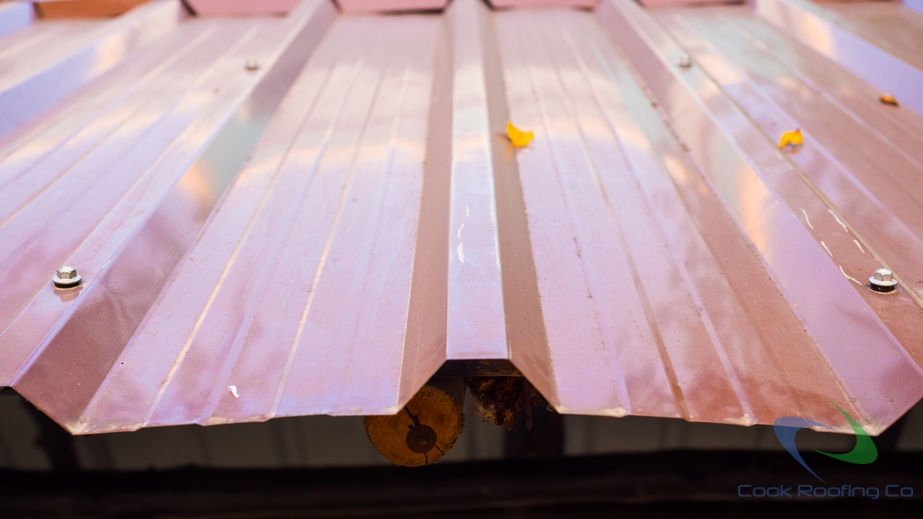
Last Updated on May 11, 2024

